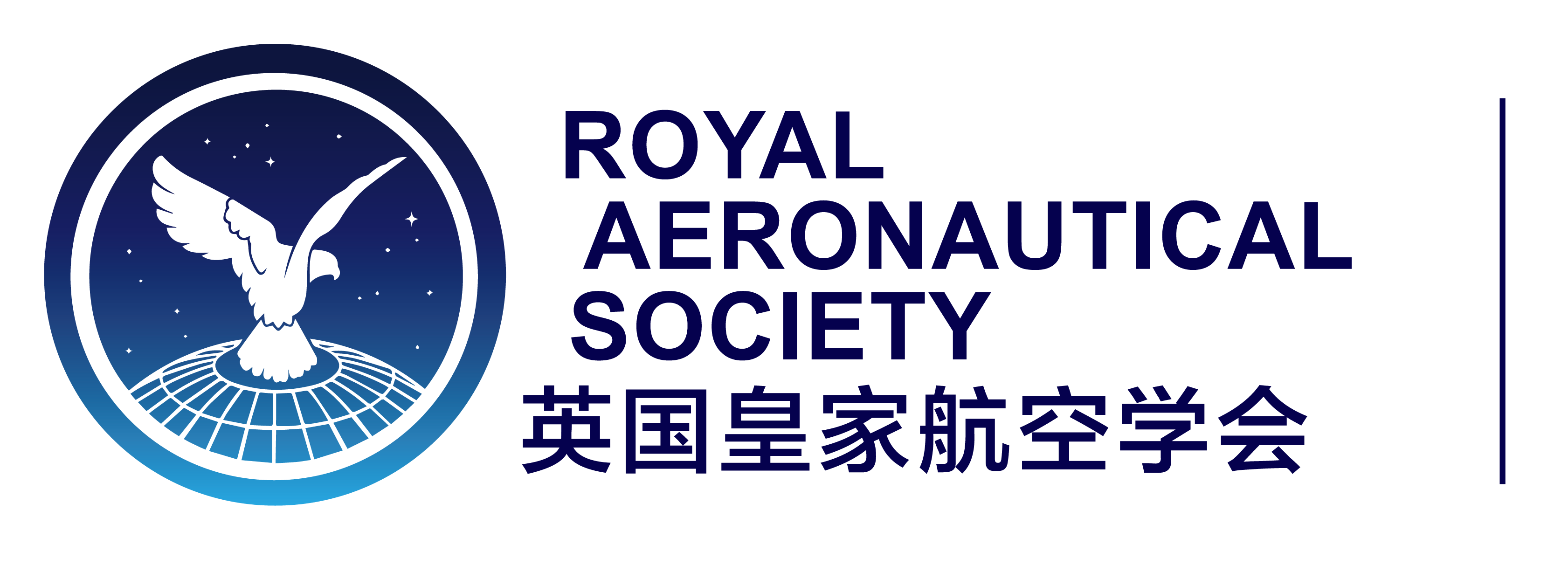Big Data and the Conscious Aircraft

Professor Ian Jennings, Technical Director, and Jim Angus, Commercial Director, Cranfield University's Integrated Vehicle Health Management (IVHM) Centre, are working on a development that seeks to enable aircraft to assess their own airworthiness.
Subject to the unknown and ever-changing landscape of sustainable development, the aviation industry needs to become more flexible and efficient, and free from the burden of heavy capital costs and all the associated maintenance, repair and overhaul. In other words, it is an exciting and novel topic.
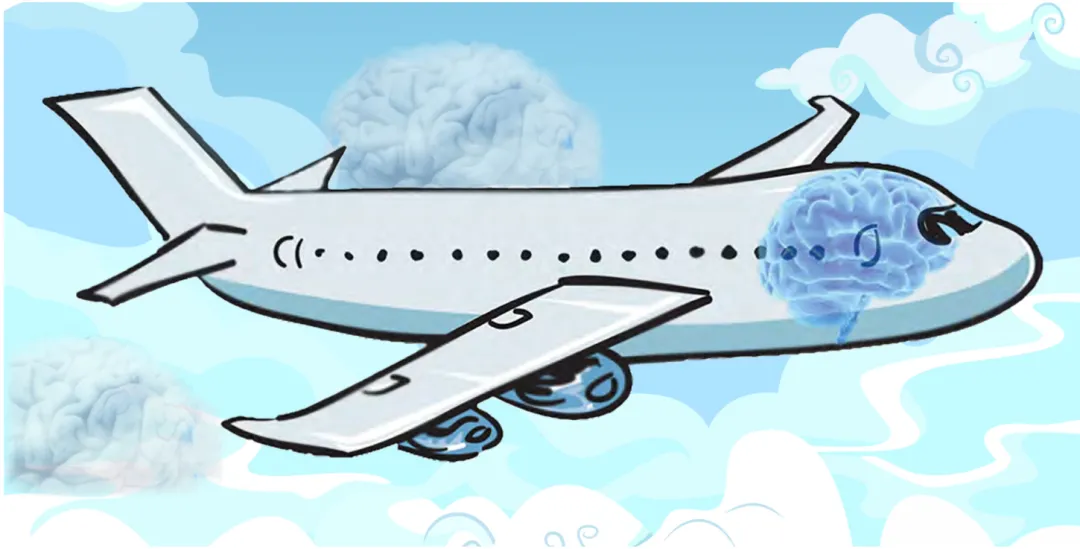
Each day an aircraft is not in use costs around £200,000 in lost revenue. A reasonable average estimate is that a narrow-body aircraft with 200 passengers, at £100 per person, would cost £160,000 for eight trips, while a wide-body aircraft with 350 passengers, at £100 per person, would cost £280,000 for one trip.
Overall aircraft maintenance is estimated to account for 10% of airline operating costs. Pre-COVID-19, global MRO spending was $83 billion and is expected to reach $115 billion by 2030 (pre-COVID-19 forecasts were $130 billion). Non-routine maintenance, i.e. “unexpected” flight delays and cancellations due to, for example, premature component failure, is one of the main issues affecting operating costs. In 2017 alone, sales of wide-body aircraft exceeded $6.5 billion and sales of smaller regional jets were close to $5 billion. Reduce the risk of damage from collisions by reducing the time aircraft are on the ground for maintenance.
Self-diagnosis
Imagine an aircraft with a human-like nervous system that senses the health of its core organs, and a skin that allows it to sense damage and changes in the external environment, such as weather conditions or the smoke of a volcanic ash cloud. Aircraft would be able to monitor their own health and predict maintenance needs, then plan a trip to an automated hangar where spare parts are already waiting.
A machine that you can talk to, just like you would talk to a human, that is self-aware at a high level and can suggest which systems might need maintenance, protecting itself by being aware of its own condition.
The principle of smart aircraft is to use sensing, advanced artificial intelligence algorithms and communication technologies to improve perception capabilities to eliminate risks and unnecessary costs, and avoid problems caused by factors such as component degradation, unforeseen technical failures and human errors. Due to the reduction of routine and planned maintenance, as well as the prediction of potential failures, the maintenance cost of a smart aircraft is expected to be reduced by 30%. The system can create orders for 3D printed replacement parts on its own, and the aircraft can also plan visits to MRO facilities. There will be other direct and indirect benefits to the sustainable development of airlines. In turn, this capability will have a significant impact on the overall operational efficiency of airlines, promote sustainable fleet operations, and support the introduction of new technologies aimed at reducing emissions and environmental impact.
Work at the Integrated Vehicle Health Management (IVHM) Centre, a collaboration between Cranfield and Boeing, shows that smart aircraft are becoming a reality.

The potential cost savings are clear, but in practice, can an aircraft really be "conscious"? Strictly speaking, no. There are many ways to describe consciousness. Architect Chambers describes consciousness as having a "quality" of conscious/subjective experience. Others describe it as awareness of consciousness (metacognition). While health management systems can be intelligent about the surrounding systems and environment, it does not imply sentience or awareness. However, the focus is on improving the health, maintenance and performance of aircraft by giving them "consciousness". The Intelligent Aircraft project aims to create an integrated vehicle health management system that is fully aware of the aircraft's state and can recommend appropriate actions based on the intelligent state. In this sense, the term "consciousness" is a new aspiration and a new standard that disrupts existing thinking.
“Intelligent aircraft models and data are synchronized with ground systems to optimize the management of aircraft throughout their life cycle.
Human-computer interaction interface
The full use of smart aircraft will promote the continuous improvement of the human-machine interface as a key factor. In the foreseeable future, large passenger aircraft may only need one pilot. Therefore, it is crucial to facilitate pilots to make effective and timely decisions through the "seamless connection" between the human brain and the smart aircraft interface. This human-machine interface is also indispensable for ground maintenance engineers responsible for the airworthiness of the aircraft. Advanced human-machine interface (HMI) will promote this "seamless" communication.
A key benefit of a self-aware aircraft is that it can better share this awareness with pilots, operators and engineers. Advanced human-machine interfaces, such as brain-computer-machine interfaces, synthetic telepathy, brain augmentation and virtual reality/augmented reality technologies, will allow pilots and (digital) engineers to communicate intuitively with the aircraft. In turn, advanced human-machine interfaces can make faster and better decisions when an aircraft encounters unexpected events during flight, and reduce the risk of accidents caused by human error. As a longer-term goal, as people continue to understand and deepen the way the brain works and makes decisions, by combining the development of cognitive science and behavioral science, through the use of advanced human-machine interaction interfaces, pilots and engineers will be able to understand the health of the aircraft as if it were a part of their own body.
Use of automated hangars
In the context of the COVID-19 pandemic, the value of automated hangars has been highlighted in order to balance cost efficiency and employee safety. Data is transmitted synchronously to ground systems through smart aircraft, thereby optimizing the way aircraft are managed throughout their life cycle. Hangars will become data-driven and based on automation technology, using a combination of aerial and ground robotics for inspections. The "lights out" MRO hangar, which only activates automation facilities when needed, will become an operation center for remote maintenance engineers. Drones equipped with vision/thermal conduction systems can fly around aircraft structures for non-destructive testing, locating anomalies and problem areas inside and outside the aircraft structure.
The inspection results are analyzed using artificial intelligence (AI) and digital twin technology, and are analyzed and verified based on physical equations and existing data, including data collected by sensors. The simulation results can be used to assess whether the aircraft needs maintenance now and in the future, and to immediately determine whether the aircraft is airworthy. The application of automation and artificial intelligence technology reduces the reliance on personnel, but the safety, verification, confirmation, confidentiality of artificial intelligence technology and the control of safe decisions made by artificial intelligence are also crucial. Automated hangars will not only help facilitate the planning of future MRO, minimize operating costs and risks to engineers, but will also reduce the risk of service interruptions due to aircraft being unavailable. This will make it more viable for airlines with small fleets. The "Lights out" MRO hangar is still a concept, but related projects are studying the technical elements involved in realizing this concept.
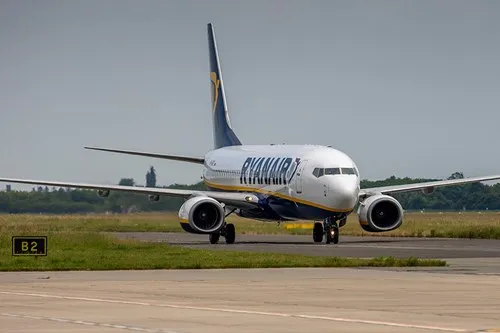
Cranfield Digital Aerospace Research and Technology Centre (DARTeC)
The Digital Aviation Research and Technology Centre (DARTeC) at Cranfield was recently opened by UK Business Secretary Kwasi Kwarteng. The centre includes a full-scale hangar laboratory that can accommodate Cranfield's 737-400 research aircraft for research, and provides facilities for aircraft inspections using drones, as well as an advanced instrument track to scan the aircraft's exterior surface using cameras and other sensors to determine damage. The hangar laboratory is connected to DARTeC's IVHM and Digital MRO laboratories and is set up as an operational control room for an airline or maintenance organization. The Digital MRO laboratory is being used to study the use of cameras to inspect aircraft and control robots to fly around the fuselage of an aircraft. The use of big data, machine learning and artificial intelligence means more complex and efficient decision-making processes that will use a wider range of experience and evidence, rather than relying solely on the experience and judgment of engineers.
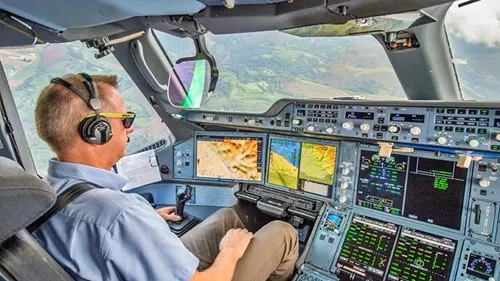
The arrival of smart aircraft
Researchers involved in the smart aircraft project believe that aviation operators will use such maintenance facilities and "smart" platforms within the next 20 years. The research roadmap shows that low-maintenance prototypes may be developed in 2035, and "smart" aircraft have the opportunity to be put into use in 2040. Based on research funding conditions, Cranfield hopes to have full aircraft digital twin capabilities by 2023/4 and digital twin prototype intelligence with reasoning capabilities by 2026.
Cranfield's IVHM Centre has used digital twin technology and vehicle reasoning at the subsystem level (e.g. environmental control systems) to demonstrate more accurate diagnostics and prognostics. This also includes the ability to monitor passengers and crew as well as aircraft health. The Framework for Reasoning of Aerospace Vehicles (FAVER) tool being developed at Cranfield is an example of AI-driven reasoning. The framework can determine how much data is needed to make an accurate prediction and whether information from other systems is needed to find the actual source of the fault, so as to carry out targeted maintenance.
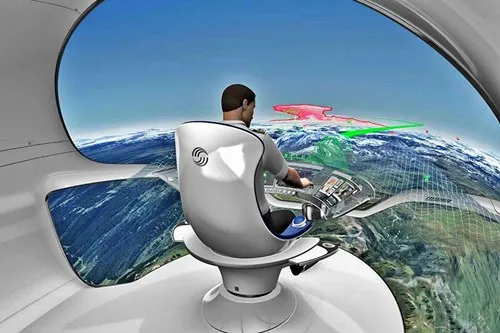
The technical bottlenecks at the current stage are to ensure the anti-interference ability of the architecture and related communication capabilities, develop the complexity and safety of applied artificial intelligence, and improve the autonomy of robots. In addition to technology, it is also necessary to obtain approval from regulatory authorities to prove that the automatic system used for maintenance can be as safe as manual operation. Judging from the development history of self-driving cars, this is not simple. In addition, a business model that adapts to the changing industry and market needs needs to be established.
Smart Operation
Another fundamental challenge comes from the digital infrastructure of aviation operations. Thousands of health parameters, engine performance indicators, pressure, speed, temperature and vibration data can be transmitted to the ground in real time for health monitoring. The problem lies in the data bottleneck in aviation, that is, the lack of data transmission speed and transmission capacity, although the cost of achieving this goal is commercially viable. Compared with traditional aircraft, new generation aircraft are expected to generate more than 30 times the amount of data. A Boeing 787 aircraft can generate 500GB of data per flight. It is estimated that by 2026, the total amount of data generated by aircraft worldwide will increase to 98 billion gigabytes per year. According to Rolls-Royce calculations in 2019, the amount of flight data is doubling every year. This means that the global fleet, including Rolls-Royce engines, will generate 98 exabytes of data (1 exabyte equals 1 billion GB). It is obvious that digital technology can change any element of the aviation industry, and MRO is no exception. In today's business development, most industries have embedded digital technology into their business models and infrastructure, but the digitalization of the aviation industry has just begun to compete.

The aviation industry realizes that the future will be based on digital transformation technologies, the third revolution of digitalization and sustainable technologies. Crucially, the success of the third technological revolution in the aviation industry will also depend on how to make these technological innovations efficient and economical for MRO. Smart aircraft will become an essential part of the new global system. To achieve this goal, we need to change the existing mindset and consider the future potential of smart aircraft at the design stage.
Excerpted from the May issue of Aerospace, a journal of the Royal Aeronautical Society
Translated by: Liang Hao, Qiu Guoqiang, Ying Rui
